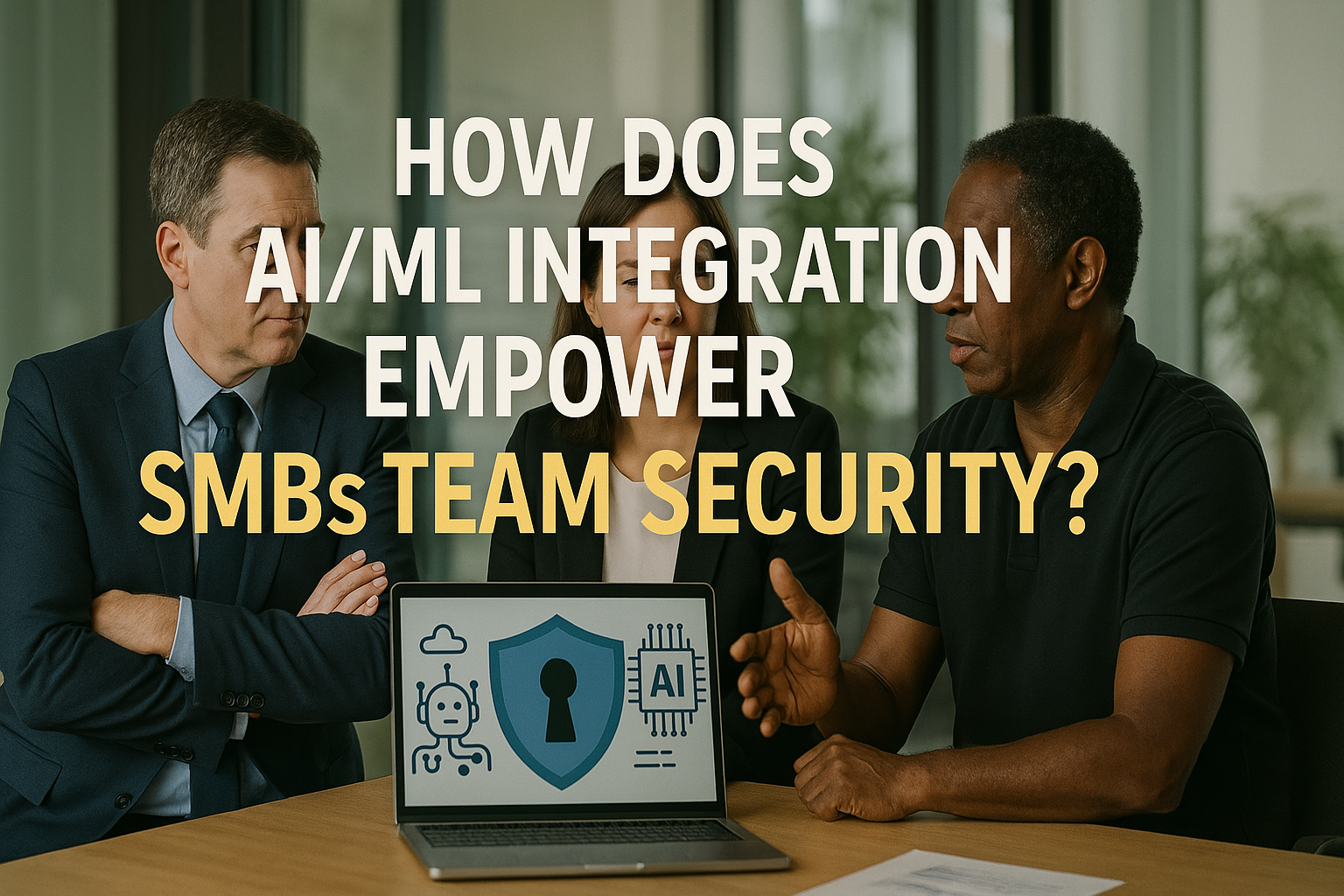
How Does AI/ML Integration Empower SMBs Team Security?
Small and medium-sized businesses (SMBs) face growing security challenges. Due to their less sophisticated security measures, they often are the primary victims of cybercriminals. While it is true that SMBs lack the budget and dedicated security teams that larger enterprises have, this does not mean they should stop innovating and investing in empowering their team's security.
AI/ML is transforming how SMBs protect their teams, assets, and data in a convenient approach. AI/ML-powered software and tools such as Agentic AI can help detect threats early, automate firewall and breach responses, improve authentication methods, and standardize internal security systems to prevent inside hacking.
Whether a startup or an emerging enterprise, here are some proven ways to adopt AI/ML to empower your team's security.
Understanding AI and ML in Security
AI/ML analyzes data and identifies unusual activities far quicker than humans can. When automated, it will learn, predict patterns, and swiftly respond to threats without human intervention.
Businesses can use AI technologies to equip security teams with automated and adaptive safeguard systems, making their teams more effective and stronger.
For example, a surveillance camera linked to AI-powered software can detect suspicious persons in a crowd using pre-built “data annotations” such as “person wearing a mask, wearing a particular colored/modeled shoes, or carrying a particular colored/modeled bag.”

Once the system detects a suspicious person, it will raise the alarm for human security to investigate further, eliminating the need to monitor each person manually.
Why SMBs Need Stronger AI Security?
A business may regularly face cyberattacks, requiring evolving security measures to prevent the theft of its customer data, login credentials, server access, development codes, etc.
- Rapidly Evolving Digital Market: The digital market is growing exponentially, with a compound annual rate of 16.3% (according to the International Data Center). It exposes brands and their products and potential risks for SMBs, which need better security measures to deal with constant attacks and breaches.
- Constant Attacks: Hackers often target smaller businesses for their lenient security measures. Nearly 43% of all cyberattacks target SMBs, almost as often as large enterprises.
- Security Teams are Strapped: Finding and hiring sufficient talent in the face of trouble is constant for SMBs. Security teams are overwhelmed and stretched thin because limited resources need reinforced security.
- Physical Vulnerability: In addition to digital threats, SMBs also face physical security risks, such as theft, vandalism, and unauthorized access. AI/ML helps companies tackle these obstacles more efficiently and accurately than traditional security methods.
- AI is an Opportunity: AI presents an effortless opportunity to strengthen your IT infrastructure, safeguard your digital assets, and streamline your office operations without exceeding the budget.
- AI protects 24/7: Unlike human teams, AI/ML safeguards companies by continuously monitoring networks, detecting threats, and responding to potential safety hazards in real-time. AI does not need breaks and can analyze vast amounts of data instantly.
How Does AI/ML Integration Strengthen SMB Security?
AI/ML enhances security by automating the process of analyzing vast amounts of data to detect and prevent attacks.
1. Detecting Threats Early
Traditional security measures often depend on predefined rules and existing tools to identify suspicious activity. However, as hackers constantly adapt and develop new techniques, these static defenses struggle to keep up with emerging threats.
AI-driven security systems offer a smarter and more adaptive approach. By analyzing user behavior, network traffic, digital security logs, and even data from images, audio, or videos, these systems excel at detecting anomalies that might go unnoticed by conventional tools.
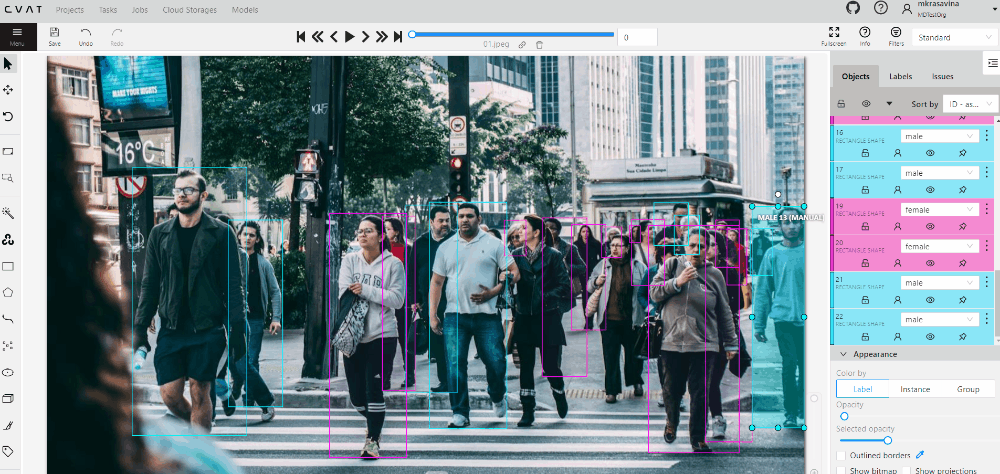
For instance, if an employee’s login credentials are used from an unusual location or an unfamiliar device, the AI system can flag this behavior as suspicious. It may then prompt for additional verification before granting access. Machine learning models are often trained to recognize anomalies based on IP addresses, GPS data, device fingerprints, and operating systems.
Similarly, if someone is observed loitering near a restricted area, AI-powered video surveillance can detect the unusual behavior in real-time and alert security personnel before a breach occurs.
2. Strengthening Cybersecurity Measures
Hackers often exploit weak passwords, outdated software, and human errors to access enterprises’ systems. For instance, employees frequently fall victim to phishing emails, tricking them into downloading attachments or clicking links to inject malware into the local system.
AI/ML integration helps reinforce local security measures to detect and avoid cyberattacks:
- Detect Phishing Attempts: AI analyzes email contents for phishing signs—such as suspicious links, impersonating email and URLs, typos, AI-generated content, and unusual requests—and warns employees before they act.
- Identify Malware and Ransomware: AI-powered cybersecurity tools scan millions of files, emails, and web traffic to detect malicious activities, report suspicious activities, and install firewalls to prevent undesired entry.
- Enhancing Firewall and Network Security: ML algorithms monitor network activity in real-time, identifying potential cyberattacks before they can cause harm. They also learn from previous encounters and work better after every breach attempt.
3. Automating Incident Response
Agility is crucial in dealing with security threats. Even a few seconds of violated entry into the system can cause the loss and corruption of millions of data, leading to severe damage.
AI-powered security solutions use multiple-faceted security measures and dodging techniques to contain serious attacks the moment they occur.
For example:
- If AI detects an unauthorized login attempt, it will lock the account and notify the IT team.
- If a surveillance system spots an intruder after business hours, it will alert security personnel and initiate lockdown simultaneously.
- If malware is detected on a company device, AI algorithms can isolate the infected system to prevent further spread.
These automated responses reduce the risk of human error and ensure that threats are addressed as quickly as possible.

4. Reducing False Alarms in Security Systems
Security cameras and motion sensors often trigger false alarms because they cannot detect harmless movements, such as pets, passing vehicles, or shadows. AI-powered surveillance systems reduce false alarms by analyzing the context of detected movements using advanced data annotations.
Instead of alerting security whenever someone walks near an entrance, pre-trained AI models can distinguish between an employee arriving for work and a potential intruder attempting to break in.
The AI software is populated with a tremendous amount of data annotated with precise labels, such as gender, cloth types, colors, and objects, improving the efficiency of the AI detection system.
Intelligent AI-integrated tools like SOAR continuously analyze security incidents, correlate vast amounts of threat data and take automated actions based on pre-defined rules and risk severity.
5. Enhancing Authentication and Access Control
Multi-factor authentication (MFA) is one of the coolest ways to protect business accounts. AI takes it further by introducing adaptive authentication, which assesses real-time risk levels.
For example, suppose an employee typically logs in from the office during business hours but suddenly tries to access the system from a new location at night. In that case, AI prompts additional security measures, such as requiring biometric authentication (fingerprint or facial recognition) or one-time passcodes.

Moreover, AI-powered facial recognition and biometric access control add to MFA, ensuring only authorized personnel can enter restricted areas. These advancements help SMBs protect their offices, warehouses, and data centers more efficiently.
6. Improving Compliance and Data Protection
Businesses across industries are required to adhere to strict regulations and compliance standards. In these scenarios, AI can assist small and medium-sized enterprises (SMBs) in staying compliant by:
- Constantly monitoring data usage and ensuring compliance with privacy laws.
- Effortlessly generate security reports for enterprises' audits.
- Detecting potential policy violations before they become legal issues
- By automating compliance tasks, SMBs save time and reduce the risk of costly penalties.
Steps for SMBs to Implement AI/ML Security Solutions
While AI and ML offer powerful security benefits, implementing these technologies requires careful planning. Let us take you through the steps.
1. Assess Current Security Needs
Start by evaluating existing security systems, identifying vulnerabilities, and determining where AI-powered solutions can offer the most value.
Start by exploring past incidents, mistakes, and solutions, including identification of critical assets and assessing employee skills and security practices, before rushing to get an automated advancement.
2. Choose AI Security Tools That Fit Your Budget
AI security solutions come in various forms, from AI-powered antivirus software and cloud-based AI security platforms to smart surveillance systems and open-source AI tools.
SMBs should select solutions that align with their budget and business needs.
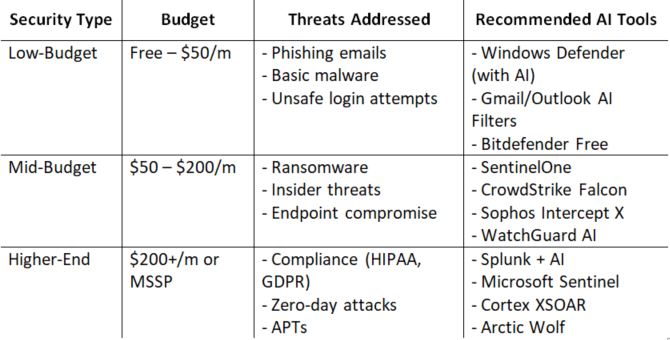
3. Work with Technology Partners
SMBs without in-house security expertise should consider partnering with AI security providers who can help deploy and manage AI-driven solutions.
Moreover, while many AI-driven security tools are straightforward, some require technical expertise to set up and manage.
SMBs can partner with cybersecurity firms or managed security service providers (MSSPs) to ensure the proper implementation of AI security measures.
4. Train Employees on AI Security Measures
Cybersecurity begins at home. AI/ML tools may come in handy in training and making employees aware of various cyber threats and understand how to use available insights to prevent them.
SMBs should provide basic training on security awareness and recognizing AI alerts, use AI-driven authentication, and follow best practices on security protocols such as standardizing MFAs, preventing open password sharing, preventing data and file sharing to applications used outside the office, etc.
5. Monitor and Update AI Security Systems
Threats evolve, and so do AI/ML security systems to counter them, so older tools and programs must be regularly updated.
Small businesses should continuously monitor their AI security tools and implement improvements based on industry standards and client requirements to stay ahead of emerging threats.

Challenges of AI Integration in SMB Security
- Cost Considerations: Advanced ML tools and AI security solutions can be expensive. However, cloud-based AI security services offer more affordable options.
- Complexity: AI systems often require proper setup and management, which requires funds. Thus, SMBs should start with user-friendly and cost-conscious AI solutions.
- Data Privacy Concerns: AI systems collect and analyze large amounts of data, raising privacy concerns. SMBs must ensure compliance with data protection regulations and handle customer and employee information responsibly.
- Need for Skilled Personnel: Managing AI-powered security systems requires expertise. Partnering with AI security specialists can help SMBs navigate this challenge.
Addressing these challenges enables SMBs to fully benefit from AI-powered security enhancements. Despite these hurdles, AI and ML continue to evolve, making security solutions more accessible and effective for SMBs.
Final Thoughts
Most SMBs can start small and scale as needed. Even basic tools like Google Workspace security or Microsoft 365 Defender include smart AI-based protections you might already be paying for.
Use MSSPs if you want AI protection without building in-house. Always train your employees—even basic AI security works best when paired with good habits.
Leave a comment if you'd like to learn more about best cyber security practices and the use of AI/Ml to safeguard your business data.
Related Post
RECOMMENDED POSTS
RECOMMENDED TOPICS
TAGS
- artificial intelligence
- agentic ai
- ai
- machine learning
- deepseek
- llm
- data science
- growth engineering
- ai/ml
- chatgpt
- gpt
- ai development
- openai
- sales growth
- data engineer
- data visualization
- productivity
- database management
- sql query
- data isolation
- api
- db expert
- database optimize
- customer expectation
- social influencers
- cloud management
- cloud storage
- cloud optimization
- application
- aws
- gcp
- social media
- social media marketing
- qwenlm
- climate change
- llm models
- leadership
- it development
- empathy
- static data
- dynamic data
- ai model
- open source
- xai
- data scientist
- bpa
- automation
- healthcare
- modern medicine
- growth hacks
- data roles
- data analyst
- artificial intelligene
- test
ABOUT
Stay ahead in the world of technology with Iowa4Tech.com! Explore the latest trends in AI, software development, cybersecurity, and emerging tech, along with expert insights and industry updates.

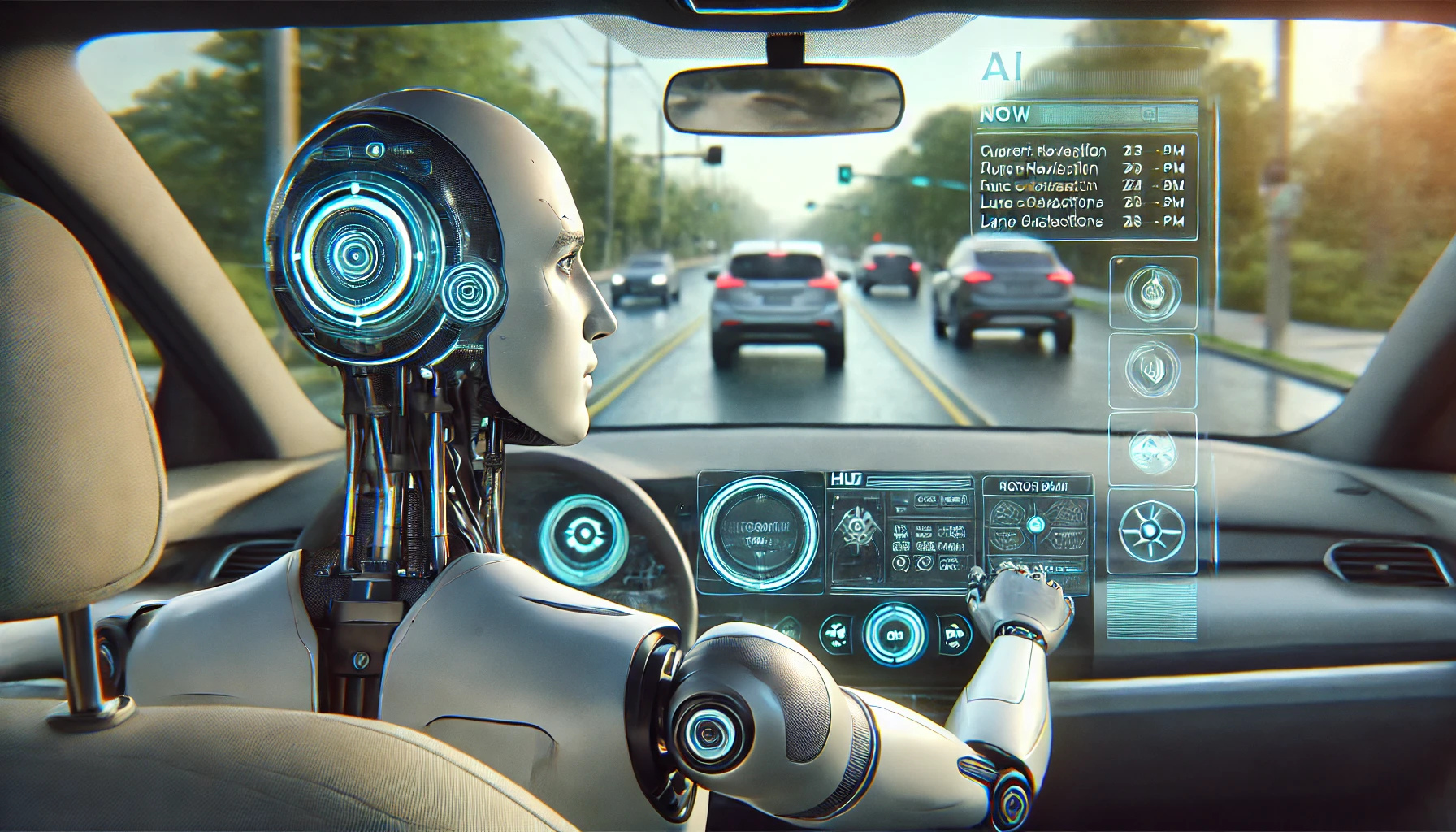
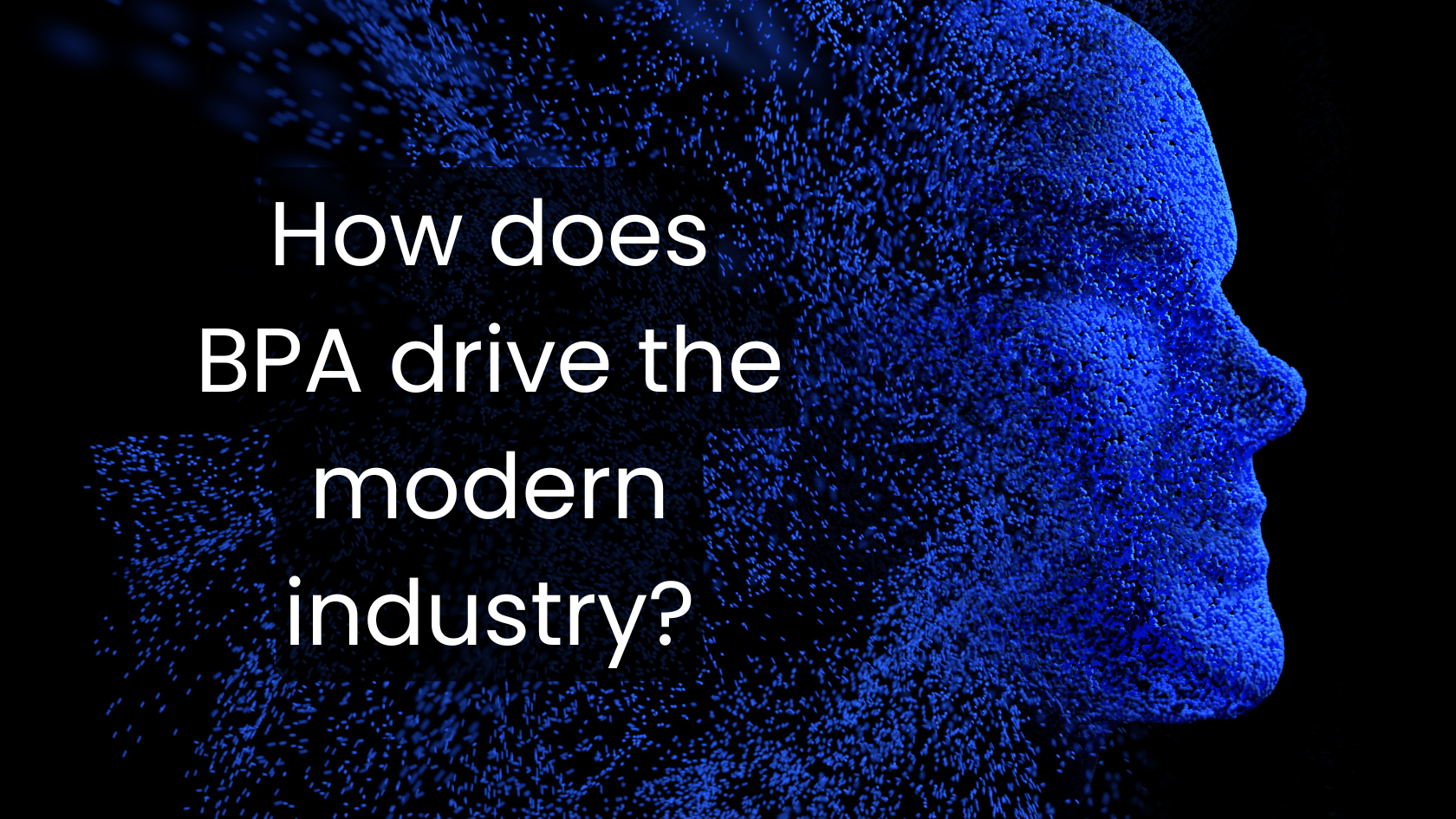

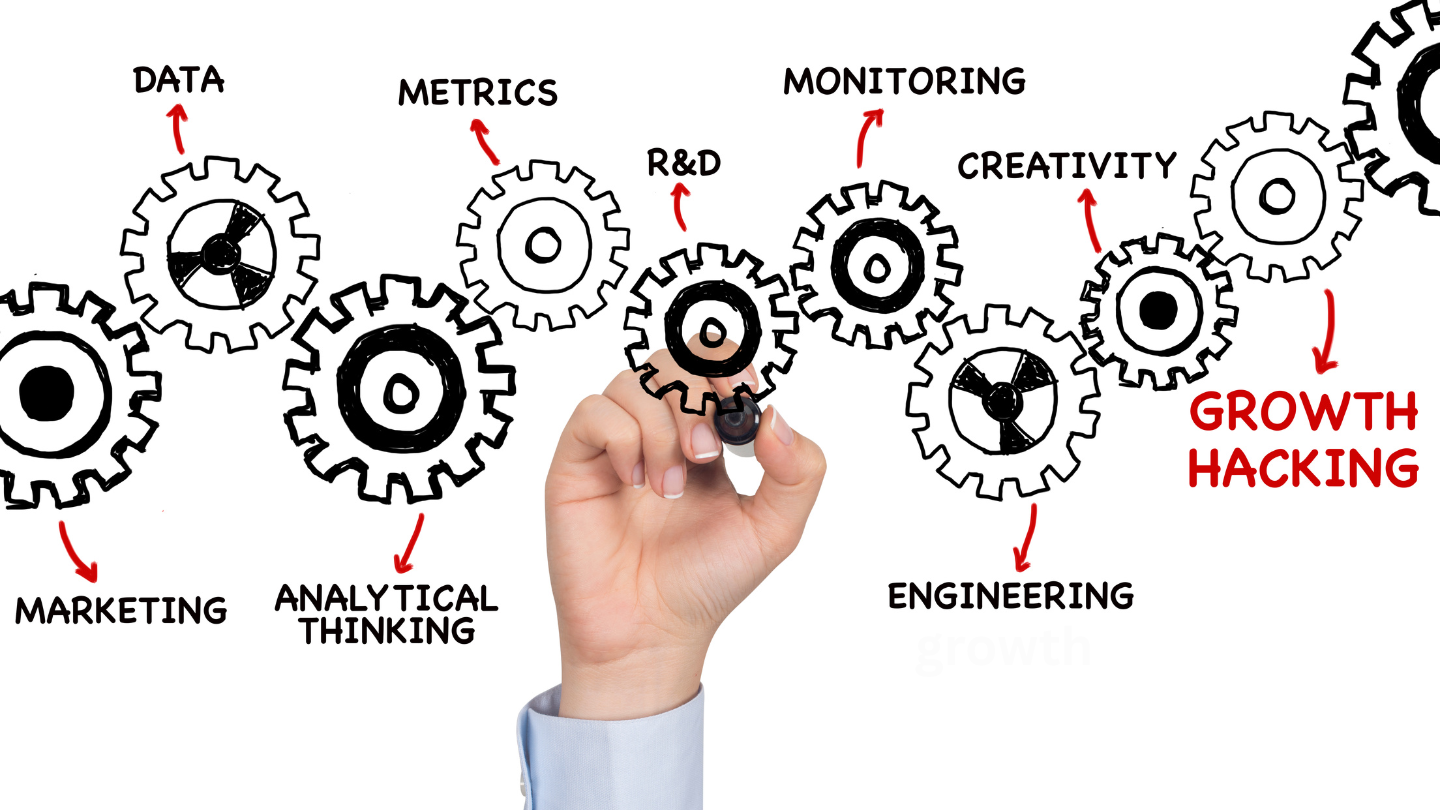
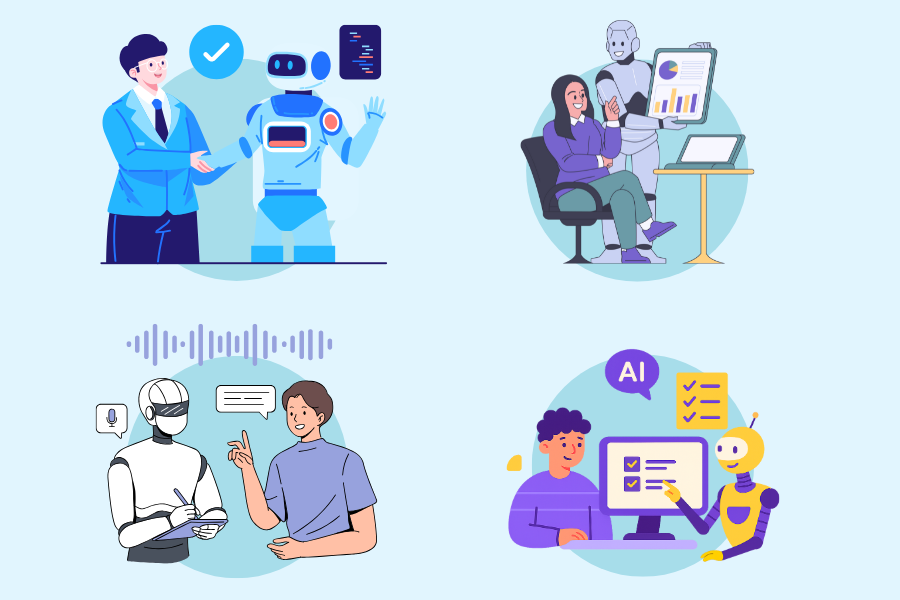
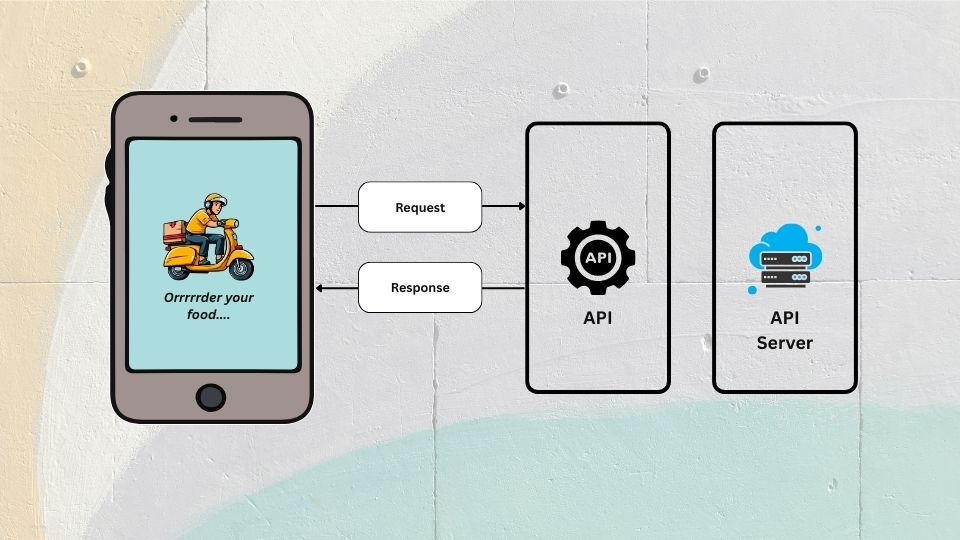

Comments(0)
Leave a Reply
Your email address will not be published. Required fields are marked *